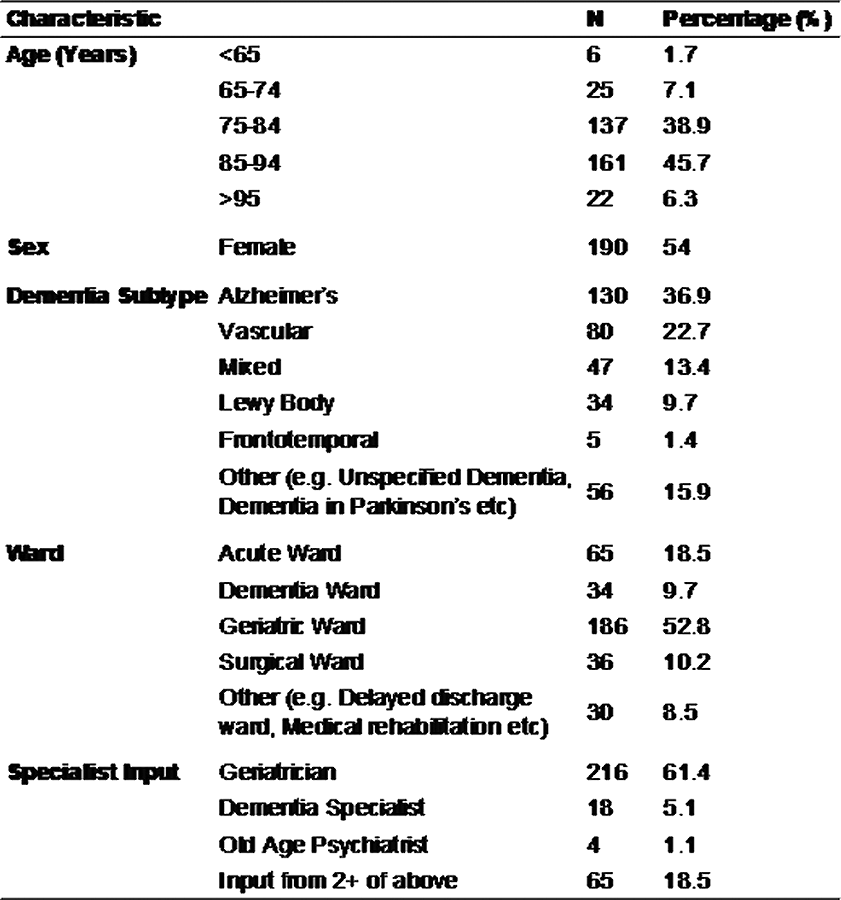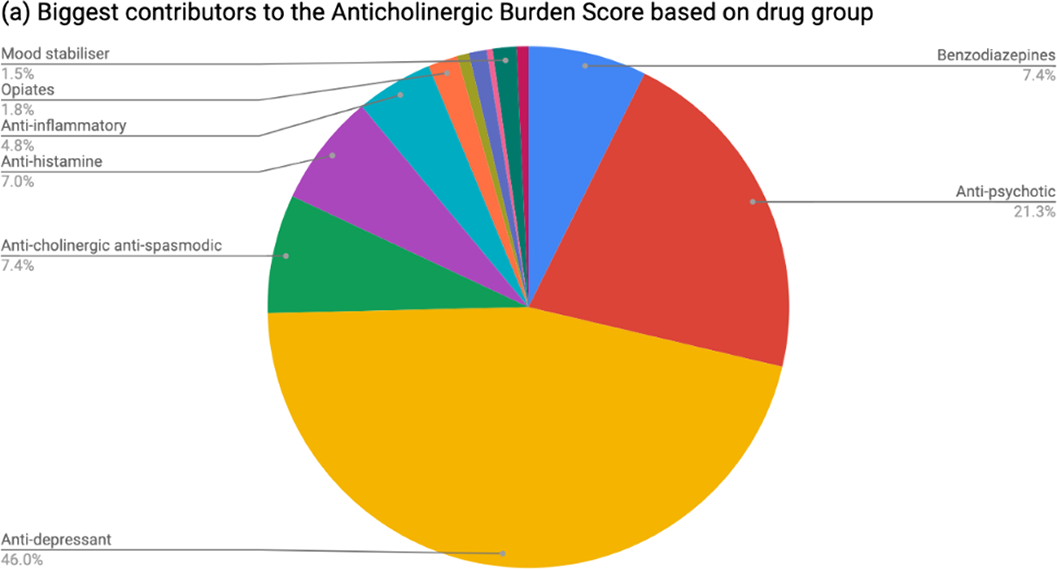455 results
FC29: Development of an Informant-Reported Lucidity Measure
-
- Journal:
- International Psychogeriatrics / Volume 35 / Issue S1 / December 2023
- Published online by Cambridge University Press:
- 02 February 2024, pp. 91-92
-
- Article
-
- You have access
- Export citation
Observations on the transmission of Dientamoeba fragilis and the cyst life cycle stage
-
- Journal:
- Parasitology / Volume 151 / Issue 3 / March 2024
- Published online by Cambridge University Press:
- 22 January 2024, pp. 337-345
-
- Article
-
- You have access
- Open access
- HTML
- Export citation
4 Methamphetamine, cannabis, HIV, and their combined effects on neurocognition
-
- Journal:
- Journal of the International Neuropsychological Society / Volume 29 / Issue s1 / November 2023
- Published online by Cambridge University Press:
- 21 December 2023, pp. 797-798
-
- Article
-
- You have access
- Export citation
3 The Relationship Between Apolipoprotein-E4 Genotype, Memory, and the Medial Temporal Lobe and How These Relationships Vary by Race in Middle-Aged Persons with HIV
-
- Journal:
- Journal of the International Neuropsychological Society / Volume 29 / Issue s1 / November 2023
- Published online by Cambridge University Press:
- 21 December 2023, pp. 683-684
-
- Article
-
- You have access
- Export citation
20 Examining the Recovery Course of Pediatric Concussion Patients with Protracted Recovery Referred to a Specialty Concussion Clinic
-
- Journal:
- Journal of the International Neuropsychological Society / Volume 29 / Issue s1 / November 2023
- Published online by Cambridge University Press:
- 21 December 2023, pp. 896-897
-
- Article
-
- You have access
- Export citation
Cannabis use may attenuate neurocognitive performance deficits resulting from methamphetamine use disorder
-
- Journal:
- Journal of the International Neuropsychological Society / Volume 30 / Issue 1 / January 2024
- Published online by Cambridge University Press:
- 09 August 2023, pp. 84-93
-
- Article
- Export citation
Predictors of Return to Work Among Patients Attending a Long-term Treatment and Rehabilitation Service for Functional Neurological Disorder (FND) and Related Conditions
-
- Journal:
- European Psychiatry / Volume 66 / Issue S1 / March 2023
- Published online by Cambridge University Press:
- 19 July 2023, pp. S1032-S1033
-
- Article
-
- You have access
- Open access
- Export citation
Strategies to increase the bioaccessibility and bioavailability of iron and zinc from cereal products
-
- Journal:
- Proceedings of the Nutrition Society , First View
- Published online by Cambridge University Press:
- 03 July 2023, pp. 1-7
-
- Article
-
- You have access
- Open access
- HTML
- Export citation
A Port by Any Other Name: A Preliminary Spatial Analysis of Ancient Infrastructural Landscapes and Settlement Organization at Macurany, Brazil
-
- Journal:
- Latin American Antiquity / Volume 35 / Issue 1 / March 2024
- Published online by Cambridge University Press:
- 10 May 2023, pp. 128-148
- Print publication:
- March 2024
-
- Article
-
- You have access
- Open access
- HTML
- Export citation
Oral and gastrointestinal bioaccessibility of anthocyanins in fresh, frozen, and blended blueberries
-
- Journal:
- Proceedings of the Nutrition Society / Volume 82 / Issue OCE1 / 2023
- Published online by Cambridge University Press:
- 08 March 2023, E10
-
- Article
-
- You have access
- HTML
- Export citation
In-tank underwater cameras can refine monitoring of laboratory fish
-
- Journal:
- Animal Welfare / Volume 28 / Issue 2 / May 2019
- Published online by Cambridge University Press:
- 01 January 2023, pp. 191-203
-
- Article
- Export citation
Quick and Correlative TOF-SIMS Analysis of Dispersoid Content in Powder Feedstock and Printed Oxide Dispersion Strengthened Alloys
-
- Journal:
- Microscopy and Microanalysis / Volume 28 / Issue S1 / August 2022
- Published online by Cambridge University Press:
- 22 July 2022, pp. 954-956
- Print publication:
- August 2022
-
- Article
-
- You have access
- Export citation
The Design and Operation of a New Relativistic Ultrafast Electron Diffraction and Imaging (RUEDI) National Facility in the UK
-
- Journal:
- Microscopy and Microanalysis / Volume 28 / Issue S1 / August 2022
- Published online by Cambridge University Press:
- 22 July 2022, pp. 2764-2765
- Print publication:
- August 2022
-
- Article
-
- You have access
- Export citation
We are human – an invisible and fundamental aspect of rehabilitation in acquired brain injury
-
- Journal:
- Brain Impairment / Volume 23 / Issue 1 / March 2022
- Published online by Cambridge University Press:
- 07 June 2022, pp. 1-3
-
- Article
-
- You have access
- HTML
- Export citation
Voter Mobilization
-
- Journal:
- PS: Political Science & Politics / Volume 55 / Issue 2 / April 2022
- Published online by Cambridge University Press:
- 31 March 2022, pp. 396-398
- Print publication:
- April 2022
-
- Article
- Export citation
Leslie Uggams, Sing Along with Mitch (1961–64), and the Reverberations of Minstrelsy
-
- Journal:
- Journal of the Society for American Music / Volume 16 / Issue 1 / February 2022
- Published online by Cambridge University Press:
- 16 March 2022, pp. 47-68
- Print publication:
- February 2022
-
- Article
-
- You have access
- Open access
- HTML
- Export citation
Neural effects of controllability as a key dimension of stress exposure
-
- Journal:
- Development and Psychopathology / Volume 35 / Issue 1 / February 2023
- Published online by Cambridge University Press:
- 17 January 2022, pp. 218-227
-
- Article
- Export citation
Coproduction as Pedagogy: Harnessing Community Data Partnerships for the Classroom
-
- Journal:
- PS: Political Science & Politics / Volume 55 / Issue 1 / January 2022
- Published online by Cambridge University Press:
- 13 September 2021, pp. 182-187
- Print publication:
- January 2022
-
- Article
- Export citation
Dementia patients have greater anti-cholinergic drug burden on discharge from hospital: A multicentre cross-sectional study
-
- Journal:
- European Psychiatry / Volume 64 / Issue S1 / April 2021
- Published online by Cambridge University Press:
- 13 August 2021, pp. S422-S423
-
- Article
-
- You have access
- Open access
- Export citation
Daily Cannabis Use is Associated With Lower CNS Inflammation in People With HIV
-
- Journal:
- Journal of the International Neuropsychological Society / Volume 27 / Issue 6 / July 2021
- Published online by Cambridge University Press:
- 15 July 2021, pp. 661-672
-
- Article
- Export citation





